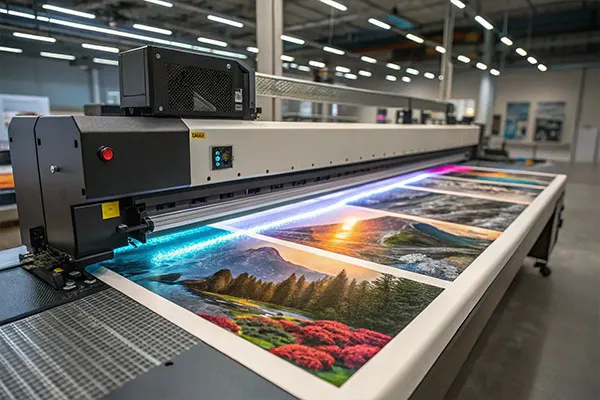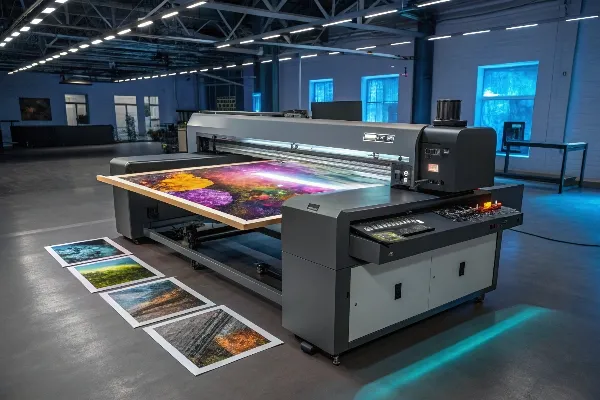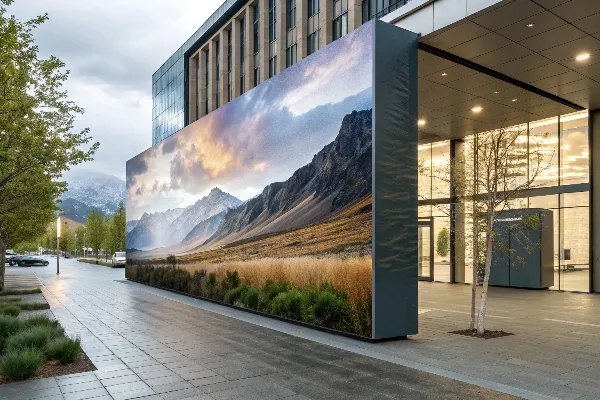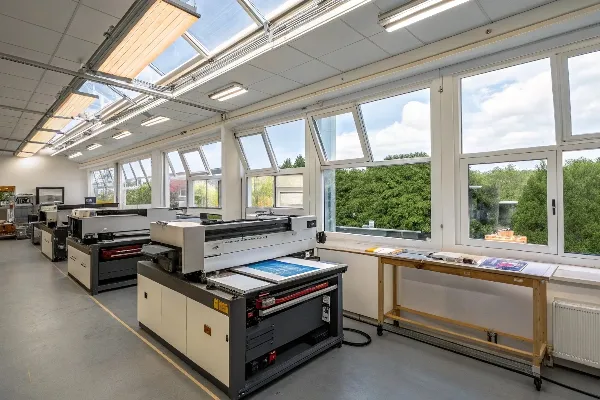Évitez que votre demande ne soit retardée, veuillez saisir votre WhatsApp/WeChat/Skype avec le message, afin que nous puissions vous contacter dans les plus brefs délais.
Nous vous répondrons dans les 24 heures. En cas d'urgence, veuillez ajouter WhatsApp : +86 17864107808, ou WeChat : +86 17864107808. Ou appelez +86 17864107808 directement.
*Nous respectons votre confidentialité et toutes les informations sont protégées. Nous n'utiliserons vos informations que pour répondre à votre demande et ne vous enverrons jamais de courriels ou de messages promotionnels non sollicités.
Are you considering upgrading your printing technology? UV printers might be exactly what you need to take your printing projects to the next level.
UV printers use ultraviolet light to cure or dry ink as it is printed, offering distinct advantages over traditional printers. These printers are versatile, fast, and efficient, making them popular across various industries.

In this article, we will break down everything you need to know about UV printers, from their key differences to the lasting benefits they offer. Let’s dive in!
You might be wondering what sets a UV printer apart from traditional inkjet or laser printers. The difference lies in the way they cure or dry the ink.
Unlike traditional printers that use heat or air to dry ink, UV printers use ultraviolet light, which immediately cures the ink as it’s printed. This results in more durable and vibrant prints.

UV printers work by applying ink directly onto a surface and then curing it with ultraviolet light. This unique process allows for printing on a wide range of materials, such as glass, wood, metal, and plastic. On the other hand, traditional printers usually rely on heat or air to dry the ink. This makes UV printers more versatile and capable of achieving sharper, more detailed prints. Traditional printers, while effective, often have limitations when it comes to materials and the durability of the prints.
| Fonctionnalité | Imprimante UV | Normal Printer |
|---|---|---|
| Processus de durcissement | UV light cures ink instantly | Heat or air dries ink slowly |
| Versatilité | Prints on a wide variety of materials | Limited to paper or specific materials |
| Durabilité | Prints are durable, scratch-resistant | Prints may fade or smudge easily |
| Vitesse | Faster due to instant curing | Slower due to drying time |
The UV curing process also allows for more vibrant colors and sharper details. This means that UV printers are often the go-to choice for industries where quality and precision matter, like packaging and promotional materials.
The real question is: What makes UV printers such a game changer for businesses? Their ability to print on almost any material is just the beginning.
UV printers offer several key advantages, including faster print speeds, greater durability, and the ability to print on unconventional materials. This makes them ideal for industries like packaging, signage, and even 3D printing.

The biggest advantage of UV printers is their speed. Since the ink is immediately cured with UV light, there’s no need for drying time, which allows for faster production. This makes them an excellent choice for businesses that need quick turnaround times. Furthermore, the durability of UV prints is another major benefit. The ink bonds directly to the surface, making the prints résistant aux rayures1 and more resistant to fading. This is especially important for products that will be exposed to the outdoors or harsh conditions.
UV printers are also versatile when it comes to materials. Unlike traditional printers that are mostly limited to paper or fabric, UV printers can print on almost any surface, including glass, wood, metal, and plastic. This opens up endless possibilities for businesses in various industries, from custom promotional items to unique packaging solutions.
| Avantage | Imprimante UV | Imprimante traditionnelle |
|---|---|---|
| Vitesse d'impression | Instant curing, no drying time | Slower due to drying process |
| Durabilité | Scratch-resistant, long-lasting prints | Prints may fade or smudge easily |
| Compatibilité des matériaux | Prints on a wide range of materials | Limité à des matériaux spécifiques |
You’re probably asking, how durable is UV printing? Let’s explore how long these prints can stand up to wear and tear.
UV printing is incredibly durable. Prints are resistant to scratches, fading, and weathering, making them ideal for both indoor and outdoor applications. With proper care, UV prints can last for many years.

The longevity of UV prints depends on the material and the environment in which they’re used. However, in general, [UV prints](UV Flatbed Printer "UV prints") are much more durable than those produced by traditional printers. This is because the UV ink bonds directly with the material’s surface, creating a stronger, more resilient print. UV prints are particularly resistant to scratches, smudging, and fading, even in harsh weather conditions. That’s why UV printers are frequently used for outdoor signage, packaging, and products that need to withstand heavy handling.
UV prints can last for several years, especially when applied to durable materials like metal, wood, and plastic. For indoor applications, they can maintain their vibrancy and clarity for an extended period, with little to no visible signs of wear. However, like any printed product, [UV prints](UV Flatbed Printer "UV prints") will eventually show signs of aging depending on their exposure to sunlight, moisture, and physical stress. Proper maintenance, such as keeping the prints clean and avoiding harsh chemicals, can further extend their lifespan.
Now, let’s address a common concern: Do UV printers need ventilation? It’s important to understand the safety aspects involved in using Impression UV2 technologie.
Yes, UV printers do need proper ventilation. The printing process releases small amounts of ozone and other emissions that could be harmful if not properly ventilated.

While UV printers are highly efficient and offer numerous advantages, they do require a certain level of ventilation for safe operation. During the printing process, small amounts of ozone and other potentially harmful emissions can be released. Without proper ventilation, these emissions can build up in the enclosed space, which could pose health risks to operators and affect the surrounding environment.
Most UV printers come with built-in exhaust systems or recommendations for ventilation. In a well-ventilated area, the risk is minimal. However, it’s still important to ensure that the workspace is adequately ventilated, especially when using [UV printers](UV Flatbed Printer "UV printers") for extended periods. Ventilation helps to keep the air clean and ensures that harmful gases don’t accumulate. For environments with limited airflow, additional exhaust fans or air purifiers may be necessary to maintain a safe working environment.
| Safety Aspect | Imprimante UV | Other Printers |
|---|---|---|
| Ventilation Need | Required for proper air circulation | Typically not needed |
| Emissions | Low levels of ozone and other emissions | Minimal emissions |
| Safety Measures | Exhaust systems and proper workspace setup | Usually no safety requirements |
UV printers offer unmatched versatility, speed, and durability, making them ideal for industries that require high-quality, long-lasting prints. With the right setup and ventilation, UV printers are a smart investment for businesses.